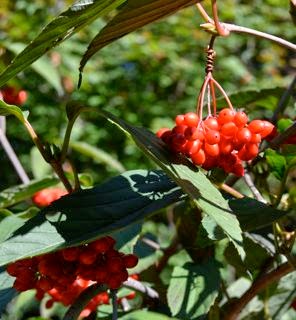 |
| Oleander aphids on milkweed |
The leaves on the milkweed plant (Asclepias syriaca) in the meadow are shriveling to yellow and crinkly brown. Yet upon closer inspection there is still some life along the plant’s folds and stems. A milkweed bug (Oncopeltus fasciatus) avoids my gaze and moves to the underside of a leaf and along the stem there are clusters of Oleander aphids (Aphis nerii) being farmed by tiny red ants. The aphids have an orange color, because just like the larvae of the milkweed beetle and monarch butterfly caterpillar, they acquire glycosides from the milkweed sap, which renders them toxic to predators. The ants protect the colonies of aphids because they feed off the honeydew, which is secreted by the tiny black tubes, or cornicles, on the aphid’s rear ends. With the first frost the aphids, ants and beetle will be gone and the milkweed plant will wither and retreat into the ground. Even if I had discovered these aphids during the growing season I would have left them well alone as a wasp parasitizes large numbers of them. Female wasps (Lysiphlebus testaceipes) lay their eggs in aphid nymphs. As the parasitoid wasp develops and consumes the insides of the nymph the aphid’s body turns color. The wasps finally emerge leaving behind brown papery mummies. Infestations of aphids on plants that are more ornamental are dealt with a soapy spray. But in this wildlife habitat garden I let nature take its course and leave the parasitoid wasps to do their thing.






